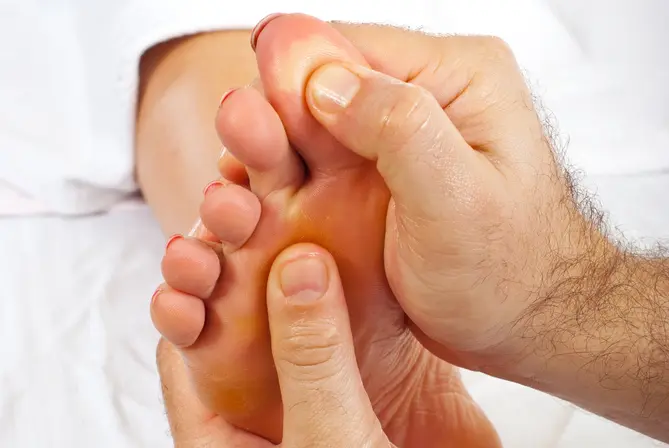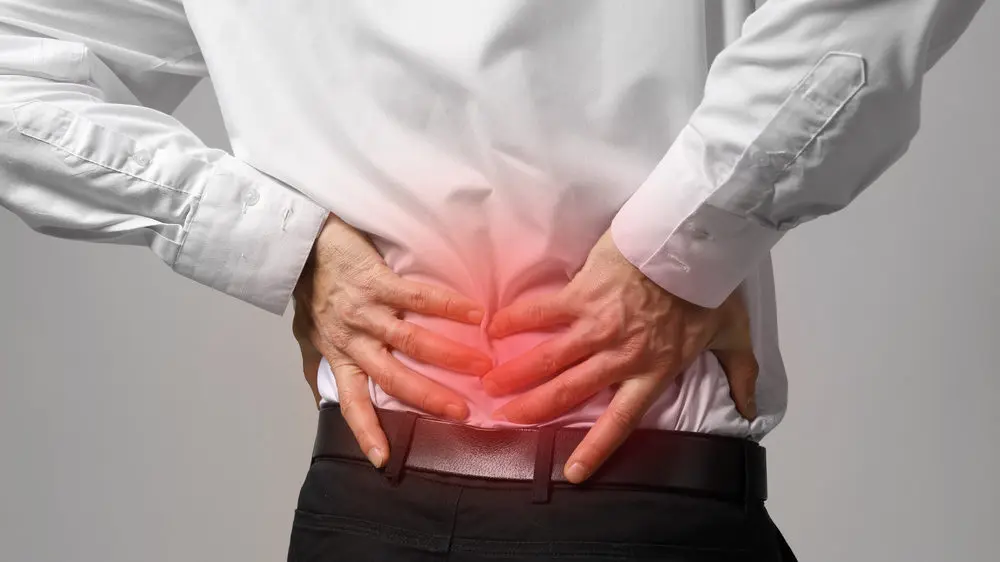Alkaline Balance Restored
Table of Contents

RESTORING ALKALINE BALANCE WITH PEMFS
Many people are preoccupied with the idea of alkaline balance in the body; there are many books on the subject. Unfortunately, a good part of the time this concept is way oversimplified.
Maintaining Neutrality
The pH of our blood is maintained in a very tight range – neutral, which is slightly more alkaline than pure water. If the pH falls below the optimal range, the result is acidosis. If the pH rises above the optimal range, the result is alkalosis. Though very different, both are dangerous. This is why the body is so extraordinarily aggressive in maintaining pH. It does this as a priority over other self-preservation functions.
Having an alkaline drink will not necessarily restore an alkaline balance in the body. It is not just a matter of what you put in your body, but how your body reacts to what you give it. In addition, it’s about other actions that take place in the body during normal activity. For instance, aerobic exercise will induce acidity in the tissues because of tissue breakdown and the body’s need to metabolize that waste. The creation of free radicals during exercise couples with an increase in oxygen will also tend to upset the pH of the blood.
Alkalizing Your Body
If the body is over alkalinized, for example by injection bicarbonate intravenously, the kidneys will work very hard to restore the pH to neutral. On the other hand, if the body’s pH is quite acidic, then injecting bicarbonate will help to restore the pH more quickly and the kidneys will have less work to do. Most of the metabolic processes in the body depend on a steady state of the pH in the neutral zone. If the pH of the blood becomes too alkaline, metabolic functions will not be normal. Very strong alkalis, such as lye, can actually create alkaline burns of the tissues. So, we can see that alkalinity is not a panacea.
Acids in the stomach will typically neutralize alkaline foods taken orally. The pancreas, which produces an alkaline fluid that includes enzymes, will help neutralize the acidic fluids coming out of the stomach. So, you can see that the body itself has many restorative and balancing mechanisms, which when left alone and not overwhelmed, can keep the pH neutral, where it is supposed to be.
Restoring unbalanced alkalinity has 2 major components to it: systemic and local.
Systemic Alkalinity
In my mind, systemic alkalinity is less relevant than local. If the body is pushed too far into the acid state by virtue of metabolic activity and/or diet, the body will rebalance these temporary states with appropriate buffering action by the kidneys. In this situation, it is best to maintain diet and activity levels that do not push the body too far into an acid state, even though it may be temporary. If this can’t be avoided, then the next best thing is to support the kidneys to do their job, which is to neutralize the acid state.
By virtue of their actions on solid organs, PEMFs help the metabolic functioning of the organ being treated. A malfunctioning or sub-optimally-functioning kidney, for example, cannot do appropriate electrolyte adjustments to rebalance pH. Using supplements that help with redox balancing can be useful. No matter what, when a body is exposed to PEMFs on a regular basis, (particularly in full-body systems or local applications which treat the kidneys) kidneys will function optimally.
I should emphasize that alkalinizing the body does not necessarily help, because the kidneys will take even an alkaline state (albeit temporary) and bring it back to neutral. So in my mind generally systemic alkalinization is moot, given the functions of the kidney. Not burdening the body with a high alkaline metabolic load is actually probably the better strategy.
Local Alkalinity
Where PEMFs can be most helpful, I believe, is in the local tissues. Inflammation, infections, toxicities, degeneration, trauma, etc., create local acidity either in tissues or specific organs. The body will do its best to restore natural function to these tissues, resulting in balanced local pH. So, the goal is not to restore pH, because that will not necessarily remove the cause of the pH imbalance. The goal is to remove the cause of the imbalance itself, and this is where PEMFs are phenomenal.
Magnetic fields will improve blood supply to local tissue, reduce chronic inflammation, stimulate tissue regeneration and repair, reduce edema (which by itself dramatically increases local acidity), among other things. Even just considering these basic functions of PEMFs, you can see that tissues will become healthier faster and restore viability and optimal functioning.
The more local tissues are balanced and healthy, the more systemic balance will occur. Significant magnitudes of local tissue acidity or imbalance will obviously affect the whole body. A splinter in a toe will create local inflammation and acidity, but will likely not significantly impact the entire organism or change the serum pH. But if the splinter becomes a rampant infection, infecting or involving the entire foot, then the pH of the whole body could be impacted. If the infection continued to spread, it could create sepsis, affecting the pH of the entire organism.
Using PEMFs
The issue of alkalinity is not as simple as some would like to portray it. PEMFs ultimately will not undo massive insults to the organism, and they do not do the job on their own. However, they work towards treating the cause of the imbalance, not just on correcting the imbalance itself.
PEMFs can have significant benefits in restoring alkalinity and normalcy in a body within certain limits, and no matter what can be an extraordinarily useful adjunct to combating the myriads of causes of acidity. For most people, at the very least, regular use of PEMFs can help the body maintain a better state of local tissue alkalinity through the reduction of inflammation and improved circulation. By combining multiple areas of tissues being rebalanced simultaneously with a PEMF system, the whole body benefits. If the body is failing and becoming aggressively acidic (as with diabetic ketoacidosis or cardiac arrest, for example), the use of PEMFs is likely to more rapidly restore balance when used alongside traditional medical rescue therapies.
PEMFS FOR PETS AND ANIMALS

PEMFS FOR PETS
Some of the first introductions of static magnets in the United States began with their use in horses. Later, pulsed magnetic fields were introduced as well for horses. At a conference put on by the North American Academy of Magnetic Therapy several years ago, a veterinarian presented her experience in using static magnets in horses. She was able to achieve dramatic results, often saving horses from surgery and/or being euthanized. Increasing numbers of veterinarians are using both static and pulsed magnetic fields in their practices. This is evidenced by an increasing supply from vendors of horse blankets, sleep pads for small pets, leg wraps, etc.
It is often the case that house pets – cats and dogs for the majority – tend to gravitate towards the magnetic fields used by their human owners. It is not uncommon for us to hear from patients that their dog/cat came to sit with them while they were doing a treatment with a PEMF device. We do not discourage this, and often hear from the patient that they have noticed an improvement in their pet. It is likely that because of their smaller body mass (as compared to most humans) that the household animal will require less time and/or less intensity than the human. This is why we should use PEMFs for pets.
METABOLIC RATES AND THE QUICKER RESPONSE RATE TO PEMFS BY PETS
One of the amazing phenomena for animals is that their metabolic rates are so much higher than humans, and therefore they responded to PEMFs much more dramatically. As in humans, the challenge is when to apply the magnetic fields. Unfortunately, most people wait until it’s too late. This is either the personal preference of the owner or the lack of awareness by the veterinarian of the value of PEMFs for pets in a given situation.
PEMFS AND PETS

PEMF treatment with ePad Friends
There is a vast array of different conditions in animals that may be treated with pulsed electromagnetic fields. PEMFs are often preferable to treatment with medications or may be able to be used alongside medications. As in humans, magnetic field therapies could be used for almost any condition, because of the very basic actions of magnetic fields on all biology. Animals may be more sensitive to these therapeutic PEMFs and respond much more quickly because of their accelerated metabolism as compared to humans.
The conditions that are very responsive to PEMFs therapies in animals include arthritis, injuries, wounds, cancers, circulatory problems, fractures, spinal cord problems, seizure disorders, skin disorders, aging, diabetes complications, and many more.
SIMILAR BIOLOGY
As in humans, PEMFs penetrate the entire volume of the animal body, including stimulating every individual cell in their path, to produce the results. As a result, by increasing the metabolism and energy in the individual cells of the body, the animals are often able to dramatically improve their healing, whether from injury, surgery, infection or other conditions. Similarly to humans, there are terminal conditions, for which magnetic therapies may not be effective, despite our best efforts. Unfortunately, knowing when this is likely to be the case is not predictable.
As with humans, animals would also benefit from lifetime health maintenance. Most people tend to look at acquiring PEMFs only when a problem shows up. However, like humans, animals can also use health maintenance treatments. These would optimize the level of health in the physiology of the animal. At the very least, this would result in decreased costs with veterinary bills, medications, special diets, physical therapies, and so on.
Biology is biology, be it human or animal. The organs may be different, the physical configuration may be different, the species may be different, but the biologic actions are comparable or identical.

PEMF treatment with TeslaFit Plus Portable
We often tell people, “When you get a PEMF system, you don’t own it, the house owns it!” That means that not only the humans get to use it, but also the dog, the cat, and the plants! This is why getting a PEMFs for pets is something you should seriously look in to.
MAGNETIC FIELDS AND WATER

There are two aspects to considering PEMFs and water. One is the internal water of our bodies. The other is the intake of magnetically treated water.
Water in the human body is mostly a “soup” of electrolytes, proteins, fats, and starches. It is a catalyst in chemical changes from simple to complex, and provides the medium for the electrical conduction required for ionization of cells and cellular mobility. Since water is the medium through which all electrochemical activity in the body takes place, its ability to respond to an electromagnetic field is a major aspect of the actions of PEMFs in the body and critical in the body’s health maintenance and healing process. Research shows that magnetic fields are capable of changing the properties of any solution with charge, and so have a direct effect on the water in our bodies.
WHAT IS WATER?
Firstly, water does not exist as a single molecule, but resembles a cluster of grapes with about 30-40 molecules in each cluster. In magnetically activated water, clusters separate into smaller clusters of five or six molecules per cluster. Moreover, this water is also more organized in structure and motion.
The size and clustering of water molecules is extraordinarily important in the ability of water to move in an out of cells. Water flux between cells is facilitated by proteins embedded in the membrane called aquaporins. These are water channel proteins. In the membrane channel, they prevent bursting of the cells due to changes of the exterior salt concentration (osmotic regulation). In humans, aquaporins regulate the flow of water in the kidney, red blood cells, the eye lens, and the brain, to name just a few. Defects in these proteins are known to be involved in a number of diseases including diabetes insipidus, congenital cataract, and impaired hearing.
PEMFS AND WATER
Magnetic exposure of water is widely used to inhibit scale buildup in heat exchangers, water storage systems and water pipes. Electric and magnetic fields affect the precipitation of barium oxalate, calcium carbonate and calcium sulfate, crystal growth rates of inorganic salts and stability of fluid suspensions. Electromagnetic field effects persist in fluids (in these situations, treated with PEMFs) up to several days after the EMFs are removed. EMFs affect diffusion of colloids (almost any substance microscopically dispersed evenly throughout a solution), surface free energy of calcium salts and change UV and Infra Red spectra of water.
Magnetic pretreatment of water has been thought to enhance the yields of plants and livestock and affect paramecia, alter cell density and size of the nucleus diameter in catfish liver cells and affect the hormone cycles of mice. A patent has also been issued on a method of magnetically treating fuel (while not water, it is a fluid) used in motors, to enhance fuel consumption.
SOME FINDINGS ON PEMFS AND WATER
It has been shown that magnetically-treated water used in dental irrigators reduces dental plaque build-up better than untreated water. Treated water was also found to cause round worms to evacuate infested children better than controls in a Chinese study. Furthermore, water coming out of certain lava flows from Japan that was naturally “magnetized” improved memory loss in Alzheimer’s patients. Other researchers found that treated water reduced kidney stones.
Therefore, EMFs are expected to not only affect the water content of the body but may also be of some use in structuring the water we drink. How these observations can be used to positively impact health is only just beginning to be discovered.
PEMF RESEARCH LIMITATIONS

There have been over 2,000 university level double-blind medical studies done on the effectiveness of pulsed electromagnetic field therapy for specific health conditions, and tens of thousands on the more general actions of magnetic fields on cells and tissue. Most of the devices used in clinical research are not commercially available and most studies are done using systems that were created by the research team doing the study itself. Translating the results of these studies into practical use in a home or clinical setting involves limitations, and remains difficult and requires technical and medical expertise.
On one hand, this is ideal. It means that the research was done responsibly and was not funded by a single manufacturer looking for proof of value for a brand name. On the other hand, it is frustrating for a consumer, because decision-making processes are made easier by brand-specific studies.
It’s also worth noting that there is very little comparative research done on given aspects of PEMF systems. For example, if a study finds that 10Hz is ideal for a given condition, that doesn’t necessarily mean that 50Hz or 1,000Hz wouldn’t be just as good or better. Since most of the biological actions that happen as a result of PEMF therapy are more closely tied to intensity, that aspect is more heavily researched than frequency or waveform.
THE ALTERNATIVES
The alternative and complementary medicine industry, like most others, is also susceptible to the competing, sometimes contradictory claims made by various manufacturers. In truth, there is a great deal of overlap between brand name PEMF devices in terms of what actions they will have on the body. Many biological processes are not dependent upon a specific frequency or intensity, for example, but will improve with any therapeutic magnetic field stimulation when applied correctly and considering the underlying condition of the body being treated.
Further complicating the research done on PEMFs is the fact that, practically speaking, they should almost always be considered a complementary therapy, added to a regimen including healthy eating, physical therapy, or even pharmaceutical use. Because PEMF therapy works on such a basic level in the body, its effects are many. This makes it difficult to pinpoint a PEMF-induced change in a single biological or chemical process responsible for an improvement in a symptom or disease state.
We must use the information gained from quality research studies and combine it with the observed outcomes from the thousands of consumers using these devices in their home. Only then can we make recommendations to individuals seeking to improve their own complex health conditions.
Dr. Pawluk will continue to review new research as it is published. For the most recent updates, check the Health Conditions page.
TALKING TO YOUR DOCTOR ABOUT PEMFS

FIND THIS ARTICLE ON THE DR. OZ WEBSITE HERE.
HAVE YOU TALKED TO YOUR DOCTOR ABOUT PULSED ELECTROMAGNETIC FIELD THERAPY?
Pulsed electromagnetic field therapy is a new approach to pain management that uses electromagnetic fields to create pulsing, moving energy. Moreover, these energy waves could change the way your body copes with pain. Learn more about this new treatment. Could it work for you? Discuss with your doctor today.
Pulsed electromagnetic field (PEMF) therapy is FDA-approved to fuse bones and has been cleared in certain devices to reduce swelling and joint pain. Similarly, Transcranial Magnetic Stimulation (TMS) and Magnetic Resonance Imaging (MRI) work on the same physics.
This therapy has been used to treat pain and edema in soft tissue for over 60 years. The technology stemmed from radio frequency (RF) diathermy, which utilized a continuous electromagnetic field to produce heat in soft tissue.
A moving – or resonating – magnetic field can create currents without heating and thus directly alter cellular signaling. Moreover, it has been firmly established that tissues including blood, muscle, ligaments, bone and cartilage respond to biophysical input, including electrical and electromagnetic fields. New studies show that with the proper field intensity and frequency, treatment with PEMF appears to be disease-modifying. The stimulation of TGFβ may be a mechanism by which PEMF favorably affects cartilage homeostasis. Through calcium-calmodulin-dependent pathways, PEMF may also increase nitric oxide activity.
PEMF MAT DEVICES
Firstly on the show, world-class pain specialist Dr. James Dillard mentioned electromagnetic portable pads to Dr. Oz. These mats produce a therapeutic pulsed electromagnetic field that can surround the entire body. They are not FDA-approved and are not made in the USA. PEMF mats are primarily advertised and distributed over the Internet, often used without medical supervision. Retail price is $2000 to $3000, and often renting is possible for a weekly rate. There are a dozen different companies that make these devices. Three examples are the Mediconsult iMRS/MRS2000, Medithera Home System, and Quantron Resonance System QRS-101.
PEMF KNEE DEVICE
Secondly on the show, family physician Dr. William Pawluk discussed the OrthoCor Active Knee System. This is an FDA-approved device that combines PEMF energy and thermal therapy to increase circulation and thus reduce swelling, relieve chronic pain and arthritis, as well as improve range of motion. The device’s technology consists of a cuff that surrounds the knee. It has a coil and heat pods that send magnetic pulses and heat through the injured tissue. Patients can walk while the OrthoCor device is in operation. OrthoCor sells its products through orthopedic clinics, physicians and health care practitioners.
PEMF PATCH DEVICES
Furthermore, Dr. Pawluk also introduced a small, disposable PEMF device called Acti-Patch by Bioelectronics Corp. In Canada, ActiPatch is a Class II device and is sold over-the-counter. Health Canada has approved it for relief of musculoskeletal pain. However, it is not FDA-approved for musculoskeletal pain, so the efficacy of these patches is still unclear. It may have some benefit with superficial pain and edema.
FURTHER READING AND INFORMATION ON PULSED ELECTROMAGNETIC FIELD THERAPY
1. Markov MS. Expanding use of pulsed electromagnetic field therapies. Electromagn Biol Med. 2007;26(3):257-74.
2. Nelson F, et al., The use of a specific pulsed electromagnetic field (PEMF) in treating early knee osteoarthritis. Trans 56th Annual Orthopaedic Research Society Meeting, New Orleans, LA (2010), p. 1034.
3. Pilla, et al., Electromagnetic fields as first messenger in biological signaling: Application to calmodulin-dependent signaling in tissue repair, Biochim. Biophys. Acta (2011), 2011 Oct 8;1810(12):1236-1245.
4. Rosch P, et al., Bioelectromagnetic medicine. New York: Marcel Dekker, 2004.
TREATING THE ENTIRE PERSON

Integrative or functional medicine is a type of medicine that takes into account the whole person (body, mind, and spirit). Treating the entire person aims to optimize the body’s natural abilities and focuses on therapies that seek first to prevent disease, then to intervene in the disease process. One of the most important tenants of integrative medicine is that the person being treated actively participate in the care.
PEMF therapy, then, fits seamlessly into the philosophy of integrative medicine. Electromagnetic therapy is safe, reliable, and effective a huge percentage of the time. Perhaps more importantly, it can be used at home. This creates self-reliant self-care, the essence of prevention.
Part of thinking holistically is acknowledging that the only way to truly be healthy is to treat the root cause of a condition instead of just managing symptoms. In many cases, symptom management is important and necessary, but it should be done while simultaneously seeking out the root cause of the disorder.
Rarely can a single modality solve a problem completely. In much the same way that a solid house cannot be built without solid bricks and mortar, so a healthy body cannot be built without proper nutrition, spiritual balance, and stable cellular communication. While magnetic field therapies can go a long way in making your body a healthy environment for new cells to be ‘born’ into, they cannot do it all. Nutrition, supplements, and lifestyle issues need to be addressed for any condition for which magnetic therapy would be considered.
UTILIZE MAGNETIC THERAPY TODAY
Magnetic therapies cannot add anything to your body – the magnetic field is not residual and it’s not magical. If you have low potassium levels, you need extra potassium. If your sodium level is too low, you need extra sodium. Magnetic therapies will not give you sodium or potassium. So, in many cases, it becomes important to supplement our diets with the nutrients required to maintain overall health.
A major part of Dr. Pawluk’s emphasis as a holistically-minded physician is that we must always treat the whole person in order for any single part of the body (or disease process) to truly improve. If you have a headache because you’re banging your head against the wall, the best course of action is to stop banging your head against the wall, not to treat the symptoms of headache. Addressing the causes is an important part of getting the best results from any kind of therapy, including PEMF therapy. Supporting the body to be as healthy as possible with good lifestyle choices allows any therapy to be more effective.
NUTRITION AND SUPPLEMENTS

Magnetic therapies have a large array of actions that support health and reduce the problems associated with many health conditions. However, these actions work better to produce results with a more comprehensive approach, including appropriate nutrition and supplements.
In general, since inflammation is a component of most health conditions, an anti-inflammatory diet is usually very helpful. A diet which consists heavily of raw vegetables and fruits would generally be the most anti-inflammatory. It’s a good rule of thumb to eat foods in the package nature provides, so the raw component is important here.
When you drink a glass of orange juice, for example, you are getting the sugar equivalent of up to 6 oranges. When the sugar is liberated from the fiber of the pulp, it becomes much more readily absorbed into the blood—that rush of sugar into the blood stream is never good. Were you to instead eat the whole orange, you would not only avoid this sugar rush, but also get the health benefits of the fiber and bioflavonoids.
Another important aspect of healthy eating is nutrient density, which has to do with how much nutrition there is in a food in comparison to how many calories are present. Colorful foods tend to have the most healthful qualities – if not in vitamins and minerals, then in phytochemicals like carotenoids.
The debate surrounding vegetarian versus omnivore living is not one to put much stock in, since it is possible to be very healthy or very unhealthy eating either way. If you choose to be vegetarian, be sure to supplement nutrients where needed, and consume plenty of sources of vegetarian protein. If you choose to eat meat, make it lean. It is generally accepted that fried or cooked fats derived from animals (meat, dairy, seafood) are strongly inflammatory in the body. To offset the free radical or oxidative stress caused by these foods, once again, raw fruits and vegetables are the answer.
Finally, it is incredibly important to drink plenty of water, especially when using magnetic therapies, because energy transfers more easily in a body that is well-hydrated. The magnetic signal will be the most robust in a body with adequate hydration levels.
Supplement quality is directly related to supplement efficacy. The better your supplements, the better job they will do for you.
Because today’s foods (including non-organic fruits and vegetables) do not contain sufficient amounts of nutrition to allow our bodies to function at optimal levels, a good multi-vitamin is important. It will act as a security blanket, covering common diet deficiencies. In addition to a good multi-vitamin, we recommend that most people take a basic foundation of supplements. These will support the body’s general health regardless of underlying health conditions.
In addition, then, to a good multivitamin, we recommend these basic foundation supplements:
- Purity’s Perfect Multi 2 twice a day
- vitamin D3 (2,000 – 5,000 IU daily)
- omega-3 fatty acids (1,000 – 3,000 mg twice per day)
- vitamin C (either a sustained-release formula of 1,000 mg twice per day, or general vitamin C 1,000 mg three times per day)
- optional – curcumin 500 mg twice a day – to reduce inflammation
- optional – green tea extract 500 mg twice a day for general wellbeing and prevention
- Magnesium (any form other than oxide) 350-500 mg/day
When using magnetic field therapies, it is also important to maintain the proper levels of magnesium in the body. Magnetic therapies cause a great deal of motion in the body by way of calcium ion movement. Magnesium is what calcium latches on to as it moves in and out of the cell, so a magnesium deficiency may undermine the value of the magnetic field treatment. Most good multivitamins, including the one recommended above, will provide adequate magnesium levels. Since most of us could use more magnesium, supplementation with magnetic therapy is recommended.
In addition to the foundation supplements, Dr. Pawluk recommends various supplements based on what a person hopes to treat.
Detoxification
Supporting detoxification is an important component of healing, whether or not magnetic therapies are used. Toxicity can be present in the body from a number of factors: environmental toxins, old viral infections, fungal infections, dental amalgams, insecticides and pesticides, heavy metals, etc. The use of nutrition and supplements improves the detoxification process, allowing the body to go through a healing process so that it can recover.
When toxins are released by cells they usually end up in the gastrointestinal tract. The major detoxification pathways in the body include the liver, gut, kidneys and skin. When toxins are processed by the liver they end up in the gut and may recycle back into the circulatory system through the veins in the gut. Trapping toxins in the gut after expiration by the liver is an important part of removing them from the body—otherwise they just keep recycling in the body without removing the total body burden.
- Chlorella pyrenoidosa, a freshwater green alga, 10 g daily, can be used for inflammation and detoxification
- Chitosan – 1 to 2 with each meal, when there is fat with the meal
- Beta sitosterol – standard dosing per the bottle
- Selenium – 200 to 400 mcg twice a day
- EDTA – as recommended by your practitioner
- DMSA – as recommended by your practitioner
Pain
Since pain is caused by so many different problems in the body, the specific approach needs to be tailored to the cause. Inflammation is probably the most common associated cause, and is likely present most the time. In injury, when nerves are bruised, crushed or cut, pain management is more related to pain suppression with over-the-counter medications such as acetaminophen (like Tylenol), salicylate (like aspirin) or other nonsteroidal anti-inflammatories (NSAIDs, like Ibuprofen).
- Vitamin E (mixed tocopherols only – not the cheaper dl-alpha tocopherol) 400 to 1600 IU daily
- Calcium 1.5 g daily
- Magnesium 600 to 750 mg daily (any form other than oxide)
- Curcumin – 1000 to 4000 mg twice a day
- Ginger: As dried root, 1 g 2 to 3 times per day to start, increased up to 4 g daily
- Willow Bark extract and Boswellia – usually found in combinations of supplements for pain and inflammation
- Bromelain – 500 mg three times a day
- Samento (Uncaria tomentosa or uña de gato) 1 capsule or 15-30 drops of liquid extract twice a day
- SAM-e enteric-coated 400 mg two to three times a day
Sleep
These can be used individually or in combination at bedtime as needs arise and results determine.
- Melatonin 3-12 mg at bedtime (some suggest taking one dose at about 4 pm and the rest at bedtime). If there is trouble staying asleep as well, 1-3 tabs of regular melatonin can be taken at dinner or up to 2 hours before sleep and 1-3 tabs of sustained release melatonin at bedtime
- 5-HTP capsules, 50-200 mg with meals or at bedtime (do not mix with SSRI anti-depressants or anti-Parkinson drugs)
- St. John’s Wort 300 mg – use caution with some medications
- Kava: as dried root, 450 mg 1 or 2 capsules at bedtime or up to twice per day
- Valerian: as extract, 400 to 900 mg 2 hours before bedtime
- German chamomile: as tea, steep 3 g of dried flower heads in 150 ml boiling water for 5 to 10 minutes and strain; take 1 cup up to 3 times daily; caps 2-3 times a day; Drops – two to five times per day take 30 to 40 drops in a little water
- L-theanine 100 mg-200mg
- GABA: 500-1,000 mg at bedtime
- Magnesium 600 to 750 mg daily (any form other than oxide)
Stress
Stress, especially cumulative stress, can cause long-term damage to our health.
- Adaptogen combination preparation – Vital Adapt Siberian ginseng: As powdered root, 0.6 to 3 g 1 to 3 times per day, or ethanolic extract, 0.5 to 6 mL 1 to 3 times a day; use for 2 to 8 weeks, then abstain for 2 weeks
- Gotu kola: As dried leaves, 600 mg 3 times per day; as tea, 600 mg dried leaves steeped in 150 mL of boiling water for 5 to 10 minutes and strain; take 1 cup 3 times per day
- Valerian: as extract, 400 to 900 mg 2 hours before bedtime
Arthritis, Tendonitis, Bursitis
These inflammatory soft tissue conditions should be treated with a combination of therapies.
- Glucosamine sulphate (not hydrochloride) 500 mg three times daily.
- Chondroitin 400 mg three times daily (alone or in combination with Glucosamine).
- Capsaicin cream (Zostrix) – thin film of cream (0.025%, 0.075%) applied to the joint/s four times a day.
- magnesium 600 to 750 mg daily (any form other than oxide)
- curcumin – 1000 to 4000 mg twice a day
- ginger: As dried root, 1 g 2 to 3 times per day to start, increased up to 4 g daily
- Willow Bark extract and Boswellia – usually found in combinations of supplements for pain and inflammation
- bromelain – 500 mg three times a day
- Samento (Uncaria tomentosa or uña de gato) 1 capsule or 15-30 drops of liquid extract twice a day.
- SAM-e enteric-coated 400 mg of twice a day to three times a day
- MSM 3000 mg/day as a powder, mixed in water
- Hyaluronic acid 100-500 mg/day (a good combination may be found in Ultimate HA)
- Collagen joint support – dose per directions on bottle
Osteopenia/Osteoporosis
The following supplements should be used in combination with walking on hard surfaces up to 7 days per week, and may be further benefited by going on an alkaline-producing diet.
- a good bone building formula, eg, OsteoPlus, Bone Health Take Care, Osteosheath, Bone-Up
- hormone replacement – with bio identical hormones (see your healthcare practitioner), DHEA 25-50 mg/ day, estrogen supporting supplements such as Estrovera or HRTPlus
COMPLEMENTARY THERAPIES

Magnetic therapies can and should be combined with other therapeutic approaches. It is rare for complementary therapies to interfere with one another.
It is sometimes difficult to find advice about combining therapies, primarily because physicians tend to have specialties. Practitioners of any discipline who only practice one discipline (even though with excellence), tend to know little about other therapeutic options. Integrative medicine urges people to know as much about their health as possible, and to explore a wide range of therapeutic options to achieve optimum health. This includes proper nutrition and a healthy lifestyle. You should always consult your physician before beginning a new therapy.
Because PEMF therapies work on such a basic level, their effects are almost always enhanced with the use of other modalities. That being said, there is usually a best practice in terms of sequence of use, duration of treatment, and time between applications.
Acupuncture
PEMF therapy may be used at the same time that acupuncture is being used. Magnetic fields have been found to stimulate acupuncture points and meridians. Acupuncture needles are temporarily stronger in action than magnetic fields; needles with current applied are even stronger. Conversely, moxa, acupressure and cupping are not typically as strong in their actions as magnetic fields. When acupuncture is the desired therapeutic approach, but the patient is not comfortable with the needles, magnetic field therapy is an excellent alternative.
Since magnetic fields act more directly on cells and tissues through which they pass than acupuncture, you can use them together to gain the benefits of both. For example, in the case of spinal arthritis—a deep joint problem with significant pain—often multiple tissues are involved. The magnetic field therapy will get at any edema in muscles, ligaments or nerves, as well as relax muscles and start cellular repair of both joints and other soft tissues. Acupuncture helps pain almost immediately.
Secondary Actions of Acupuncture
The secondary actions of acupuncture on the immune system, other hormones and repair mechanisms take more time to happen and can easily be overwhelmed or reversed by other events in a person’s life or processes happening in the body. This means that with both therapeutic systems, you can expect the primary actions of both to be more active than waiting for secondary actions of either one to kick in.
If a patient wishes to use both types of therapies on the same day, it would be recommended do the PEMF treatment first, and then follow with the acupuncture. The magnetic field therapy will start any action on the tissues directly, and rebalance all the cells, while the acupuncture will start with the systemic actions. When the secondary effects of both kick in, the overall therapeutic action of each is greatly increased.

Chiropractic Work, Massage, and Physical Therapy
Chiropractic manipulation and massage work directly on muscles, superficial soft tissues, and ligaments to reduce tightness, spasms, strains, and subluxations. These forms of bodywork help to stimulate acupuncture points and meridians, improve circulation to tissues, and relax muscles. Secondarily, massage works to flood the body with endorphins. Since many toxins and wastes are stored in muscles, along with a great amount of tension and related blockages of circulation, regular massage would help most of us to maintain better health.
Best benefit would likely be garnered from using the magnetic therapy first, followed by chiropractic manipulation, massage, or physical therapy. Magnetic field therapy would help the person and muscles to relax before massage is started, thereby requiring less work on the therapist’s part to get deeper into tissues for much deeper stimulation.
Regular (especially daily) use of whole-body magnetic field therapy at home would decrease the need for manipulation or massage by keeping tissues detoxified and relaxed, while keeping the cumulative physical effects of stress to a minimum. Even so, massage has more direct physical action on the muscles themselves than magnetic therapy, which is why the combination of regular local and/or whole body PEMF therapy and chiropractic work would keep the body from aging as quickly and help to prevent problems from developing or worsening.

Infrared
Infrared is invisible radiant energy and is part of the electromagnetic spectrum. Its wavelengths are longer that those of visible light, but significantly shorter than the wavelengths used in PEMF devices. Because of this, infrared typically is not able to penetrate the body very deeply – within an inch of the surface of the skin, most of the signal will have dissipated.
In a therapeutic setting, the term infrared usually refers to near infrared as opposed to far infrared. Most infrared systems are intended for local application and tend to be primarily available in practitioner’s offices or, in the case of far infrared, in saunas. The goal of both near and far infrared is heating.
Infrared can be used alongside PEMF therapy for added benefits. The person is essentially going to be getting a broader spectrum of frequencies when these modalities are combined. Infrared may help acute problems more quickly than PEMF therapy, so in the case of an acute injury, we suggest the person use infrared first and follow that with PEMF treatment. Otherwise, PEMF therapy can be used first and infrared therapy used secondarily.

Laser
In a therapeutic setting, the term laser usually refers to low-level laser (as opposed to the tissue-destructive lasers used for ablation, skin lesions, and the like). Low level lasers are often used in a similar way as infrared. Laser beams are narrow and focused, so they are able to penetrate the body more deeply than infrared. Lasers may be used with different colors and therefore have the combined benefits of the laser frequencies along with the color benefits. Most therapeutic lasers are red.
Because of the intense, very high-frequency and focus of the laser beam, PEMFs will have use in a wider area of treatment and will interact with tissues at lower frequencies. Low-frequency PEMFs penetrate the body completely, but lasers tend to be more superficial in their depth of penetration. Lasers cannot be used safely around certain body structures, such as the eyes and brain. For the most part, PEMFs do not have these limitations.
PEMFs may be used simultaneously with low-level laser, or before or after laser therapy.
Chelation
Chelation therapy, whether IV or oral, creates significant movement of electrolytes, minerals and metals in and out of cells. This movement (especially if it’s calcium, sodium and potassium) may create significant interaction with magnetic field therapy. There is not any extensive research available regarding chelation and PEMF therapy used concurrently.
Based on the few experiences we do have with these modalities being used together, and the resulting significant temporary side effects, it is not recommended that chelation and magnetic field therapy be used on the same day. It doesn’t matter which modality is used first. Chances of a temporary negative interaction increases with whole-body PEMF exposure. At this point, because of our minimal experience, we do not advocate whole body exposure on the same day as chelation until practitioners who use both therapies have gained more experience and can give us better guidance.
Light Therapy
Active light therapy can include lights or lamps that radiate specific colors, having colored crystals applied, use natural spectrum lighting, etc. Specific colors are used to generate specific actions and reactions in the body. Lighting systems, like with laser and infrared, are limited by the thickness of the tissues exposed. They are often blocked by clothing.
PEMFs will not interfere with this therapy, and may be used alongside with light therapies. To avoid frequency interference, we suggest PEMFs be used prior to light therapy if used on the same day.
Hypnosis, Counseling, and Psychotherapy
We have worked with many practitioners who combine PEMF therapies along with psychological approaches. Most PEMF systems cause people to become relaxed. There are specific PEMF devices which have selectable frequencies that can be specifically used to tune the brain into different levels of relaxation, from light to very deep. PEMFs can be used for stress reduction, and then because the person is more relaxed, they can more effectively participate in psychological therapy approaches. In this case, it is recommended to do the PEMF therapy before and/or during psychological therapies.
Ozone Therapy
Many of the effects of ozone therapy are comparable to effects of PEMF therapy. Ozone works internally to create the production of oxygen in tissues. PEMFs also improve oxygenation and circulation. Research done in Cuba found that combining PEMF with ozone therapy increases the benefits of ozone over standard therapy for arthritis of the knee.
To be effective, ozone has to be absorbed by the tissues, enter the circulatory system, then be distributed to tissues. By the time the ozone gets into the tissues, it may be diluted dramatically. Because PEMFs will assist in this dispersion, we recommend these therapies be combined to improve effectiveness.
Homeopathy
Homeopathy is based on an almost completely different set of principles than magnetic field therapy. Basically, homeopathy relies on principles of similar resonance. To be effective, homeopathic remedies must resonate with the symptoms of the person being treated. PEMFs produce frequencies that could potentially interact with the frequencies of homeopathic remedies.
PEMF frequencies are typically much lower than those of homeopathic remedies. That means that PEMF frequencies are expected to interact with homeopathic remedies as a result of harmonic resonance where their frequencies overlap. Even so, the likelihood of harmonic interaction is probably very low.
Since it is not known for certain whether homeopathic remedies could be canceled out by PEMFs, it is suggested that the patient use these modalities at different times. Preferably, the patient would use the magnetic therapy first. In fact, several days of magnetic therapy use may very well help to clear the terrain before homeopathy might be applied.
HOW DOES PEMF WORK FOR ACUTE AND CHRONIC BACK PAIN?

It’s fairly likely that you are among the 85% of adults who experience back pain, both acute and chronic, at some point in their lives. Back pain causes missed work, and is a leading cause of disability claims. Back pain is the second most common neurological ailment, second only to headaches.
Americans spend billions of dollars every year on treatments for various types of back pain. Unfortunately, these treatments generally offer temporary relief, if they help at all. Some of these treatments, especially prescription drugs, come with more risks than the moderate relief they provide is worth.
Treatment with Pulsed Electromagnetic Fields (PEMFs) is a safe, non-invasive alternative. While surgery should be a last resort, PEMF therapy should be considered as an early intervention. With the right early treatment, riskier procedures and prescriptions might be avoided altogether.
WHAT CAUSES BACK PAIN?
There are numerous causes of back pain. Lifting something that is too heavy can cause sprains, strains, or spasms in the back muscles or ligaments. Discs can rupture or bulge as a result of strain or compression in the spine. Discs naturally lose fluid and flexibility with age, hindering their ability to protect the vertebrae.
Nerve irritation and bone lesions can also cause back pain, especially in the lower back. Degenerative conditions such as arthritis or disc disease, osteoporosis, viral infection or other structural abnormalities can be at the root of back pain. Lifestyle choices, such as obesity, smoking, stress, inappropriate posture, and poor sleeping position can also cause back pain.
Sometimes, pain can radiate to the back as a result of injury or disease elsewhere in the body. With so many potential causes, it’s no wonder back pain is such a common complaint. The range of possibilities also means that determining the root cause of pain can be difficult, making appropriate treatments hard to discern.
PEMF therapy is effective on all kinds of pain, without the risks of other treatments. That’s why it’s such a great first step.
ACUTE PAIN
Back pain often begins as acute pain, but sometimes lingers until it’s considered chronic. Knowing the difference between the two can help guide treatment with PEMFs, as well as other interventions.
Acute pain is an important part of the healthy healing process. Acute pain is a communication that something has gone wrong, and a signal that you need to take care of a problem. This pain is usually the result of trauma or a mechanical disorder, such as arthritis.
Injury sends a signal to your brain, prompting an inflammatory response that protects the area from further damage as you heal. This signal is received in the limbic system, where emotions live. That signal creates an intense emotional response, which in turn causes the pain that helps you take the steps necessary for healing. As the injury heals, that emotional response is reduced.
Acute back pain may cause muscle aches, spasms, shooting or stabbing pain, limited range of motion or flexibility, and you may be unable to stand up straight. When acute pain is treated properly, it subsides quickly – usually within a few days – as the injury heals.
CHRONIC PAIN
Chronic pain, on the other hand, can last indefinitely. To be considered chronic, pain must persist for more than three months. Chronic pain often gets progressively worse, and it can be tough to determine the cause.
Up to 10% of people develop chronic back pain, which impacts daily life considerably. Chronic back pain can lead to even more debilitating health issues, such as anxiety, depression, immune suppression, difficulty sleeping, and eating disorders. Treatment options for chronic back pain are often more expensive, more complex, riskier, and less effective.
Inflammation that lingers after healing has occurred can cause your limbic system to move from an intense emotional reaction to a state of continual emotional suffering. Changes can occur in your brain that intensify minor pain signals, making them feel more severe. These changes can even convert a simple touch to a pain signal. Treatment to the brain circuits can be a critical aspect of controlling chronic pain. PEMFs can provide this treatment in a safe, non-invasive way.
PEMF THERAPY OFFERS EFFECTIVE RELIEF FOR BACK PAIN
PEMF therapy sends pulsed magnetic fields to specific areas in the body. These energy waves heal damage at the cellular level. PEMFs can target back pain, regardless of cause. Even better, PEMF therapy can also target pain response centers in the brain, helping diminish the long term emotional suffering and regulate brain function.
Research is very clear that PEMFs are safe and effective to use across the brain, even at high intensities. PEMFs repair brain tissue and adjust brain frequency functions, helping to calm overactive, over excited signals.
I monitor PEMF research closely, and am always pleased with the results that show how effective PEMFs can be for pain management.
Two studies in particular have shown that PEMFs have considerable potential for reducing pain in participants with lumbar radiculopathy and whiplash syndrome.
The first studied a total of 100 patients with lumbar radiculopathy (pressure on a spinal nerve root) and 92 with whiplash syndrome. One group of patients received the standard medications diclofenac and tizanidine and magnetic field treatment twice a day for two weeks. The other group received only medications. For both conditions studied, pain relief was significant with the addition of magnetic field treatments.
In the second randomized controlled clinical trial, the impact of a PEMF system in managing pain caused by lumbar radiculopathy from spinal disc disease was evaluated. Lumbar nerve root compression can result in pain that can radiate to the hips or down to the legs or feet.
The authors of this study concluded that PEMF therapy is an effective method for the conservative treatment of lumbar radiculopathy caused by lumbar disc prolapse, as well as effective in reducing nerve root compression.
THE DRAWBACKS TO TRADITIONAL CHRONIC PAIN MANAGEMENT TECHNIQUES
One of the biggest shortcomings of more commonly used pain management techniques is that the treatments are simply covering symptoms, not removing the source of the pain.
This is one of the reasons opioid pain medications are so dangerous! It often takes higher and higher doses to mask the symptoms, and because the cause of the pain wasn’t addressed, if you stop taking the medications, the pain returns. It’s quite clear that with the opioid crisis in America, pain medications aren’t the best solution.
Even surgery that is supposed to correct a problem isn’t always effective. Because identifying the source of chronic pain is so tricky to identify, correcting a problem such as herniated disc or radiculopathy may not help.
I’ve seen patients who developed what we call “failed backs,” meaning they’ve had multiple procedures on their back but still have severe pain – sometimes even worse than the pain they started with!
Conventional treatments are better known, and physicians will often recommend only what they are familiar with. I did this myself when I first began in practice, avoiding treatments that seemed less scientific. If only I’d known then what I know now!
Frustrated with the options, and after seeing the dire consequences of some of these treatments, I made it a point to learn more about other treatments and the value they might offer.
Early on, I saw the potential for magnetic therapies, especially since they came with very low risk. It’s my goal to share what I have learned so others can benefit from the information I have gathered, and avoid the unnecessary risks of other treatments.
PEMFS ARE A SAFE ALTERNATIVE FOR BOTH ACUTE AND CHRONIC BACK PAIN
PEMFs work quickly, with often dramatic results when treating acute back pain. Patients report that when they used a PEMF system for acute back pain, the problem resolved quickly. While it’s great to know that acute pain can be resolved quickly with PEMFs, they are more often used for chronic back pain, since this is the pain that lingers and causes such extreme suffering.
PEMFs can make a huge difference in the daily life of patients with chronic back pain. Even if the pain is not completely eliminated, it can become much more mild, allowing patients to get back to their daily routines. PEMFs can also be used on the brain, to soothe the limbic system and prevent your brain from sending out overinflated pain signals.
Many of my patients have found great relief using PEMFs for back pain, whether chronic or acute. Knowing exactly which system is right for your needs can be difficult, since different conditions require different frequencies or intensities.
If you have questions on using PEMFs for back pain, or want help finding the best product for you, call our office at 866-987-0514 to speak to a member of my team. With PEMF therapy, you can take control of your life and manage your back pain safely and easily – in the comfort of your own home!
References:
Omar AS, Awadalla MA, El-Latif MA. Evaluation of pulsed electromagnetic field therapy in the management of patients with discogenic lumbar radiculopathy. Int J Rheum Dis. 2012 Oct;15(5): 101-8.
PEMF MACHINE RISKS – CONTRAINDICATIONS AND CAUTIONS

POTENTIAL DANGERS OF PEMF THERAPY
The only absolute caution (contraindications) for use of a PEMF device is placing an active applicator over implanted electrical devices like pacemakers, cochlear implants, intrathecal pumps, etc., because the magnetic field can shut the device off or otherwise interfere with its function.
PEMFs are contraindicated in organ transplant patients. This is because these people are on immune suppression medications to prevent organ rejection. We do not want to risk adversely affecting the immune suppression/rejection process. There is a chance that PEMFs may actually stimulate or activate a more aggressive rejection process by stimulating the immune system.
USING YOUR PEMF MACHINE SAFELY
Safety of PEMFs has not been established in pregnancy, although there is no evidence of harm. Most manufacturers warn against the use of their device during pregnancy.
PEMFs should be used with caution in Grave’s disease or in the case of active bleeding.
Extremely high intensity PEMFs (> 5000 Gauss) should be used with caution or with professional guidance in people with implanted metals, such as joint replacements, dental implants, mechanical heart valves, metal stents, or metal staples in blood vessels. This is not due to risk of injury or harm, but because these PEMFs may stimulate the nerves in the area of the metal, causing sharp pain. With any of these situations “going low and slow” https://www.drpawluk.com/going-low-and-slow/ is recommended to determine optimal intensity level. These PEMFs may also add to the shear stress of metal clips placed in or near blood vessels.
High intensity PEMFs over breast implants used to be considered a possible risk to the implant material. Women are now being recommended to do breast MRIs periodically due to the inflammation-related breast health risk. If there is considered to be no risk from MRI, PEMFs would be expected to be safe. Use of high-frequency PEMFs beyond 1000 Hz are probably also not desirable for treatment durations longer than an hour at a time, given the risk of agitating the plastic or silicone in breast implants, resulting in possible thinning and risk of leakage.